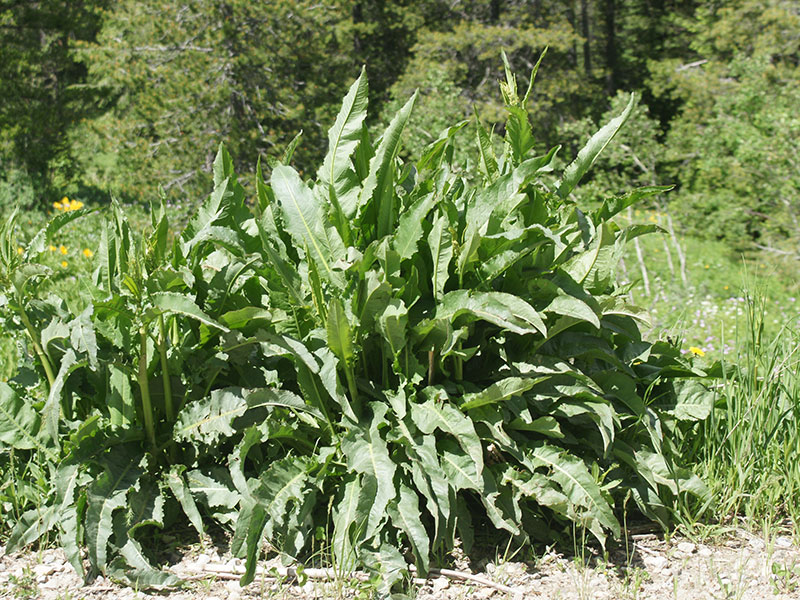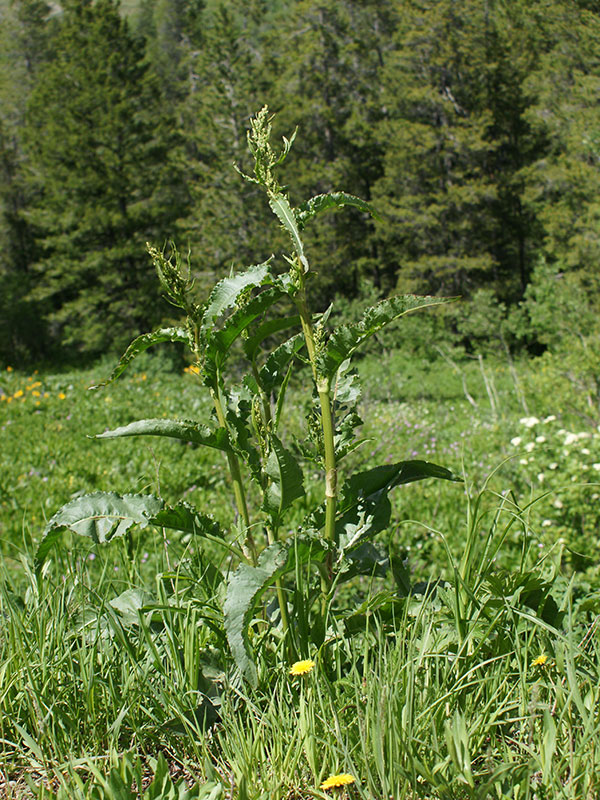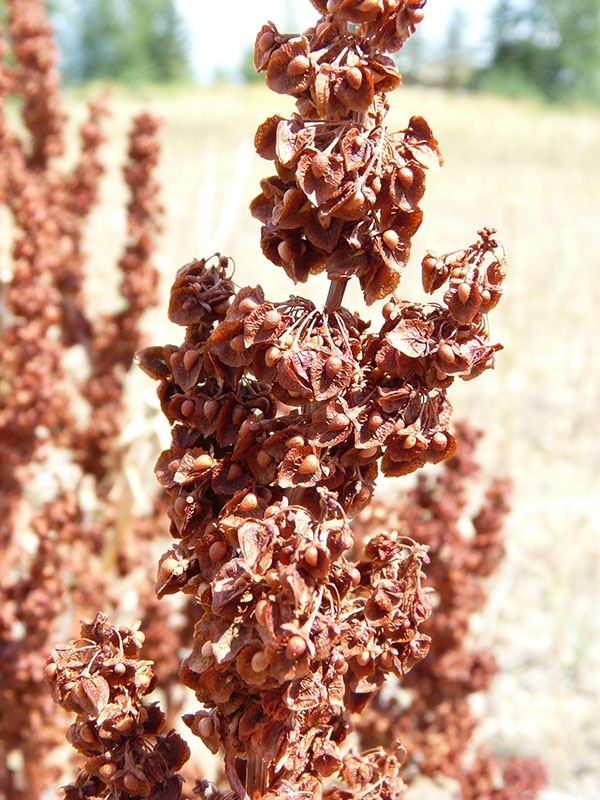Rumex crispus / curly dock
- rather large, lance-shaped leaves
- curly leaf margins, like crisped bacon or “crinkly-wavy”
- tall flowering stalks with many, many small yellow/green-ish flowers
- fruits are just like the flowers but deep red
- widespread and very much a weed
Also known as: curled dock, yellow dock, sorrel, sour dock, narrow-leaved dock
Curly dock is an introduced weed, both perennial and long-lived, at least 3 to 5 years (but sometimes is more like an annual). Unlike others of its ilk, it somehow lacks the really interesting biological bits that make weeds interesting. Basically, it is ugly and unpopular. Still…
As a vegetative plant, curly dock starts as a rosette of basal leaves, perhaps a foot across. Depending on when its seed germinated (which can happen throughout the growing season), this rosette may overwinter before bolting and flowering in late spring, or it may send up its flowering stalk from the root crown in as little as 40 days. The leaves are usually rather large and much longer than wide, i.e. lance shaped. Immediately identifiable characteristics are the leaf margins; they are can be described as crisped (like cooked bacon), or “crinkly-wavy”. There are both basal and stem leaves, the former being larger. The leaf surface is dull rather than shiny.
As the plant bolts, the flowering stalk has round stems which are hairless and ribbed. The stalk grows as high as 3 feet and is topped with a branched flower cluster. Each branch has numerous whorls of 10 to 25 small, stalked flowers. These are usually crowded toward the tips and more separated back down the stem. The flowers may be male, female or perfect (both male and female). I rather like the formal description of the inflorescence because it both tells a lot and very little (at least to me). It is a “panicle of racemes with whorls of flowers”.
The flowers are unusual for a dicot, having 3 inner and 3 outer yellow or reddish green sepals and no petals. There are also 6 stamens and one pistil. This groups-of-three morphology is quite common in monocots. The flowers are wind pollinated.
Curly dock seeds are shiny and brown and surrounded by the calyx of the flower that produced them. This packaging enables them to float on either water or air. It also allows the fruits to get caught in animal fur. In these ways, the seeds spread to new locations and can establish quite large and dense populations.
Curly dock is widespread in disturbed and waste areas, along roadsides, in fields and meadows, along stream banks and pond edges and along forest edges. Partly due to its deep, forked [yellow] taproot system, it is tolerant of a huge variety of soil types and environmental conditions. These characteristics are responsible for the species being found in all 50 states and most of the rest of the world.
Interesting bits – Curly dock is edible, at least sort of. There are, for example, recipes on the web for stuffed dock leaves, dock seed brownies, salad fixins and more. The dried seeds can be ground into flour without removing the calyx/pod remnants. Supposedly it resembles buckwheat flour. The leaves can be used as a vegetable, but with the caveat that young and tender leaves need to be boiled in several changes of water to remove as much of the oxalic acid as possible. They should only be consumed in moderation as they can irritate the urinary tract and increase the risk of developing kidney stones.
There are lots of other caveats about eating them, so check them out carefully before taking a big mouthful. And always remember to ask your mother, first.
| Color | |
|---|---|
| Family | |
| Blossom size | |
| Inflorescence size | |
| Inflorescence type | |
| When? | |
| Where? |




